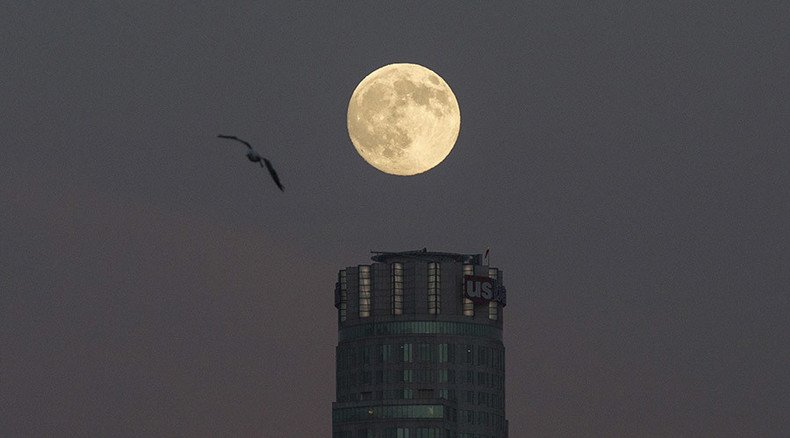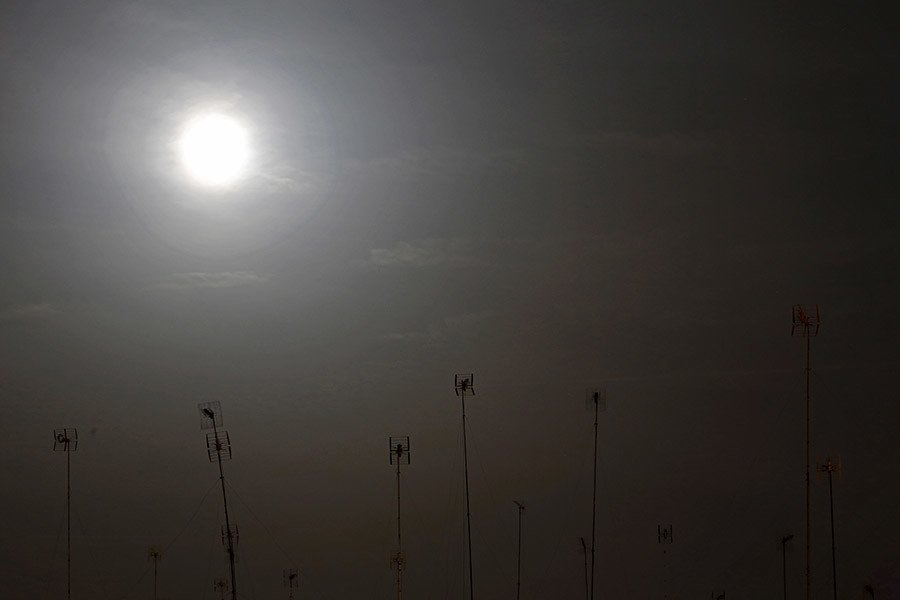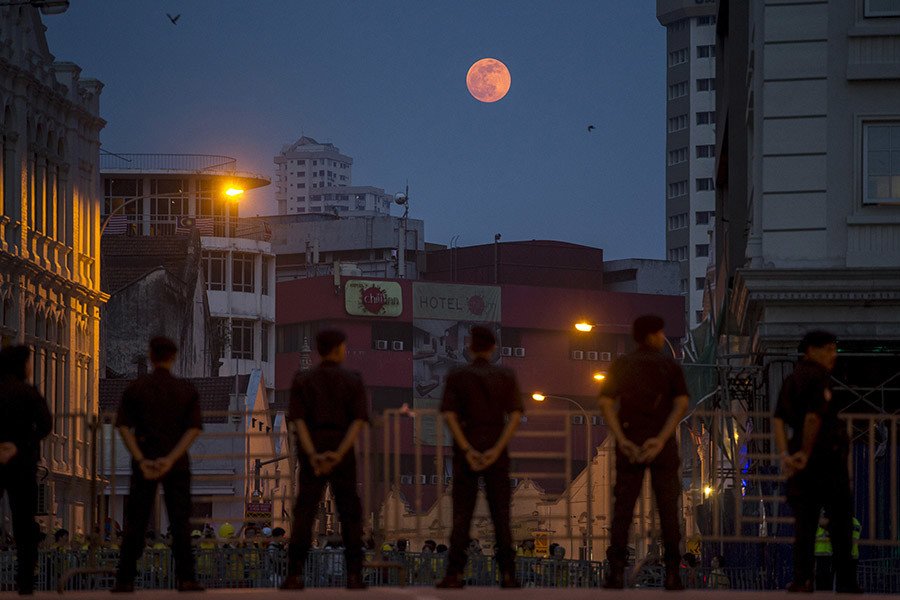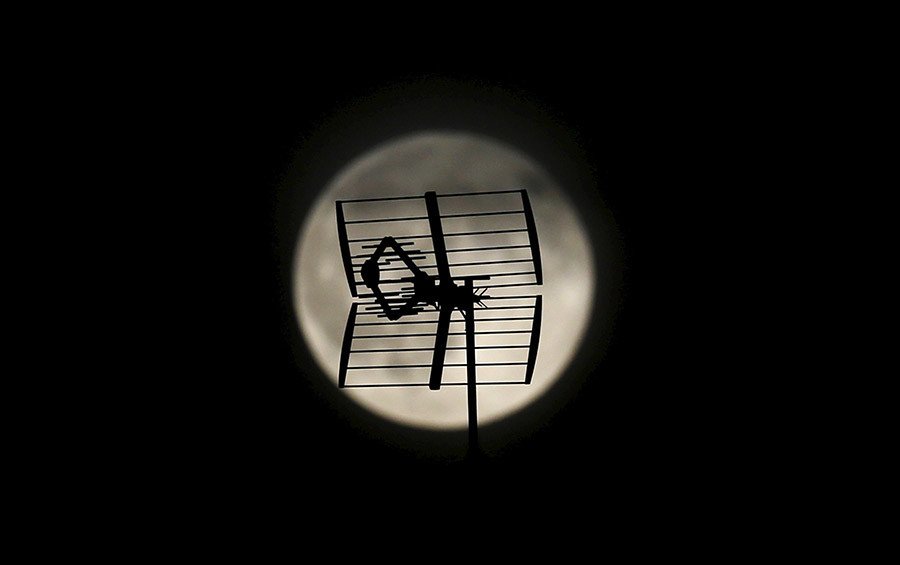Sturgeon Moon 2015 rises: Stunning supermoon lights up Saturday night sky (PHOTOS)

Tonight the world has been able to observe a spectacular celestial phenomenon – the supermoon, also known as the Sturgeon Moon. It is the first of three consecutive “supermoons” occurring this year.
In fact, the term ‘supermoon’ is not astronomical. Scientists call this event a ‘perigee moon’: it takes place when the full Moon reaches the closest point to Earth on its oval orbit. This point is called perigee and it is about 50,000 km closer to our planet than the opposite side of the Moon’s elliptical path – apogee.
Tonight's super moon 29/08/2015. #nofilter@EveningChron@NorthEastTweets@itvtynetees@Ross_Hutchinson#Supermoonpic.twitter.com/4NpzzXX3uv
— Kaz Hudspith (@Kazhuddi) August 29, 2015#SuperMoon over #Austin came out for a few moments - but has been hiding behind the clouds tonight #txwx#Texaspic.twitter.com/uumgNGiEzf
— Tornado Trackers (@tornadotrackers) August 30, 2015The term ‘supermoon’ was first coined by astrologist Richard Nolle back in 1979, who defined it as “a new or full moon which occurs with the moon at or near (within 90 percent of) its closest approach to Earth in a given orbit.”
What's a #SuperMoonpic.twitter.com/ubMh09oTJ8
— zodiac forum (@zodiacforum) August 29, 2015NASA says that this ‘supermoon’ or ‘perigee moon’ is up to 14 percent larger and 30 percent brighter than the opposite phenomenon – a ‘micromoon.’

Such celestial phenomena are not rare – there were five supermoons in 2014, and there will be six in 2015. Three have already occurred – in January, February and March – one will be observed tonight, and two are still to come, in September and October.
However, for some reason, it causes quite a stir in social media every time, with crowds of excited people keen on snapping photos flocking to suitable locations.
#Gardening by the #Moon for August 29 - Excellent for any vine crops such as... http://t.co/1C3nCo9Nan
— The Farmers' Almanac (@FarmersAlmanac) August 29, 2015Native Americans used to give every full moon a special name. For example, the full moon in August was often referred to as the Sturgeon Moon.

“The fishing tribes are given credit for the naming of this Moon, since sturgeon, a large fish of the Great Lakes and other major bodies of water, were most readily caught during this month,” the Farmer’s Almanac website says.
Come sit on the roof with me.. And look at full moons and all things that people miss. #SturgeonMoonpic.twitter.com/bXFCFttmbb
— BigBadJohn (@Redneck1656) August 30, 2015“A few tribes knew it as the Full Red Moon because, as the Moon rises, it appears reddish through any sultry haze. It was also called the Green Corn Moon or Grain Moon,” the site adds.
Hashtags #supermoon and #sturgeonmoon are already trending on social media, where users share their impressions of celestial events, as well as the pictures they take.
#Supermoon From East Matunuck Beach RI @SurfSkiWxMan@tjdelsanto@JimCantore@NBC10_Mark@AccuRayno@Ginger_Zeepic.twitter.com/H4cZRpA0u0
— Eweather (@Eweather13) August 30, 2015The next two supermoons will be called the Harvest Moon (September) and the Hunter’s Moon (October).

The Year 2015 has done a lot to thrill social media with astronomical events of all kinds. In July the world witnessed a phenomenon dubbed the Blue Moon. However, it wasn’t really blue and looked like a regular full moon. The label Blue Moon is applied to the second full moon in a single month, which occurs very rarely, hence the expression – “once in a Blue Moon.”
#sturgeonmoon#Supermoon over Lake Bellaire, MI pic.twitter.com/YhrdjLTfVD
— dpomp (@dpomp) August 30, 2015READ MORE: Venus & Jupiter to pair in spectacular 'Star of Bethlehem' conjunction
Stargazers were treated to another cosmic spectacle in July when the two brightest planets, Venus and Jupiter, came so close to each other in the sky that they appeared to be a single, super bright star, which some astronomy-lovers claim resembled the biblical ‘Star of Bethlehem.’
The #SuperMoon is very bright. pic.twitter.com/gYIm12UqV7
— chloedancer (@chloedancer) August 30, 2015READ MORE: Supermoon solar eclipse thrills sky gazers (PHOTOS, VIDEOS)
In March gazers across Europe and other parts of the world were awed by a rare solar eclipse, which coincided with other astral events such as the spring equinox and a supermoon.












